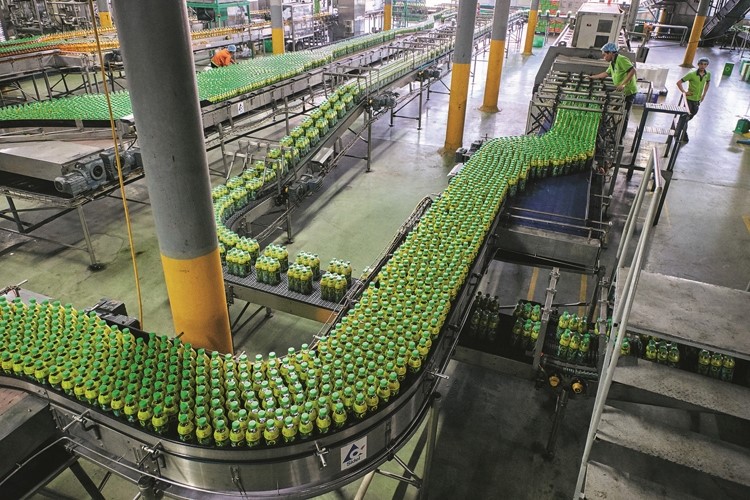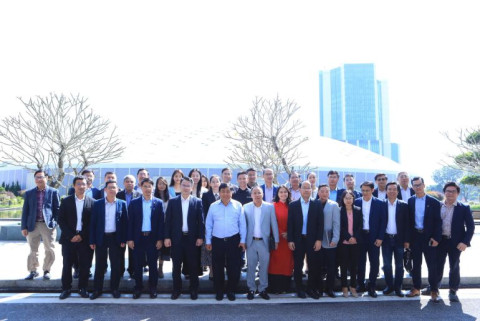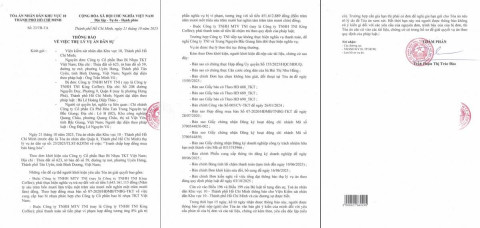The alcoholic beverage sector encountered challenges due to a decline in market share and operational realignments by companies.
- 43
- Business
- 21:48 23/11/2023
DNHN - Revenues and market share will decline in 2023 as a result of decreased demand for alcoholic beverages, escalating costs of raw materials, and intense competition. Numerous companies have been compelled to substitute products, decrease prices
According to Saigon Binh Tay Beer Group Joint Stock Company's (Sabibeco) 2023 semi-annual financial report, the company's revenue for the initial half of the year was a mere 964 billion VND, representing a decline of 13% in comparison to the corresponding period of the previous year. The enterprise incurred an after-tax loss of approximately 52 billion VND, whereas it generated a profit of over 38 billion VND during the corresponding period of the previous year.

Habeco (BHN), also known as Hanoi Beer-Alcohol-Beverage Corporation, encountered a comparable circumstance. According to this company's financial report for the third quarter, the first nine months of the year generated a meager profit of 291 billion VND, a 39% decline compared to the same period in the prior year. Compared to the previous period, Habeco's net revenue decreased by 7% to 5,510 billion VND during this period.
Leaders at Habeco attribute the sales decline primarily to the escalation in the cost of raw materials. Additionally, the second-largest domestic beer manufacturer stated that consumer consumption trends are declining while competition is "ferocious."
In addition to the economic crisis, several other factors influence alcohol demand, including the trend towards restricting unhealthy products, the tightening of state management regulations, and others. job.
To endure a challenging environment, numerous alcohol enterprises have been compelled to employ any means possible to entice customers, including the production of non-alcoholic beer, price reductions, promotion increases, and more.
As per Sabeco's findings, during the initial nine months of the current year, both revenue and profit were diminished in comparison to the corresponding period last year. This decline can be attributed, in part, to stringent regulatory measures and intense market competition. Regarding road and rail traffic, administrative penalties are governed by Decree 100/2019. In the interim, there has been an increase in input costs, sales costs, and business management costs. The company attributes the lacklustre demand for beer to consumers reducing their expenditures on discretionary items. As a result, manufacturers are compelled to enhance their advertising, promotion, and discount strategies to secure and expand their market presence.
The primary factor contributing to the decline in profits for Habeco is a reduction in production. During the same period, production output was 79% and consumption output was 74.09%. Conversely, the cost of critical raw materials (malt, rice, and sugar) rose substantially, impacting expenditures and consequently impeding business profits.
Mr. Nguyen Van Viet, Chairman of the Vietnam Beer-Alcohol-Beverage Association (VBA), asserts that social distancing measures imposed in response to the COVID-19 pandemic have had a protracted effect on the beer industry, which has been further compounded by specialized management policies and Decree 100. Moreover, as a consequence of the global supply chain disruption, the cost of raw materials utilized in the beer industry has escalated significantly. The beverage industry witnessed significant setbacks in its production and business operations, as the consumption market contracted by 20% to 30%.
In response to this circumstance, the alcohol industry has implemented modifications to its operations and production methods. Certain brands have initiated the transition to low-alcohol, non-alcoholic beverages or cocktails, as well as fruit-flavored low-alcohol beer. Illustratively, Heineken's 0.0 percent alcohol beer or Chill brand (Goody Group Joint Stock Company)'s assortment of bottled fruit cocktails containing approximately 4.5 percent alcohol...
Van Nguyen Quang Duy
Related news
- Connecting Leaders, Shaping the Future: Strategic Leadership Planning Meeting – CorporateConnections Hanoi A
- Sunlight - Unilever Vietnam Recognized for Outstanding Contributions to the National Initiative Supporting Women Entrepreneurs
- Deputy Prime Minister Nguyễn Chí Dũng: “The country’s major challenges weigh heavily on my mind — and we must resolve them together.
- Unitsky String Technologies signs cooperation agreements with three Vietnamese partners, opening a new direction for smart mobility and sustainable development
- When artists do business – livelihood is no poetry!
- Before the D‑day to abolish flat‑rate tax: Fear of technology and costs leave small traders struggling to adapt
- Vietnamese enterprises at a crossroads: the impact of a potential US–China deal
- "Digital technicians" must not be forgotten if Vietnam aims to meet its strategic goals
- HDBank: Impressive profit growth, leading in profitability and advancing international integration
- TNI King Coffee sued for over VND 5 Billion in unpaid debts
- VINASME and Jeonnam Technopark Sign MOU on technology cooperation, human resource training, and trade promotion
- Vietnamese entrepreneurs strengthen ASEAN connectivity in the digital iIntegration era
- Prime Minister: Vietnam aims to become a regional logistics hub
- Vietnam upgraded to Secondary Emerging Market by FTSE Russell
- Hanoi’s economy grows 7.92% in first nine months of 2025, FDI surges nearly threefold
- Vietnam’s strong gdp growth fails to ease labor market distress
- US tariffs on Brazil propel Vietnam’s pangasius into global spotlight
- VietLeap AI Accelerator launches: A strategic springboard for Vietnam’s AI startups
- CICON expands strategic alliances: A new step forward in Vietnam–Korea business connectivity
- What must Vietnamese enterprises do to maintain their position in the global supply chain?
Đọc thêm Business
Connecting Leaders, Shaping the Future: Strategic Leadership Planning Meeting – CorporateConnections Hanoi A
"Your network is your most powerful flowing asset. It generates value, multiplies opportunities, and accelerates your influence across borders."
Innovative ESG enterprise: Trạm Xe Việt startup proposes solutions to build a green mobility ecosystem
As Vietnam commits to achieving Net Zero by 2050 and tightens emissions standards, the transportation sector faces unprecedented pressure to transform.
Deputy Prime Minister Nguyễn Chí Dũng: “The country’s major challenges weigh heavily on my mind — and we must resolve them together.
On the morning of November 26, 2025, Deputy Prime Minister Nguyễn Chí Dũng chaired a high-level working session at the National Innovation Center (NIC) in Hòa Lạc.
Unitsky String Technologies signs cooperation agreements with three Vietnamese partners, opening a new direction for smart mobility and sustainable development
The signing ceremony took place in Minsk, Belarus, on November 28, 2025.
Before the D‑day to abolish flat‑rate tax: Fear of technology and costs leave small traders struggling to adapt
From 1 January 2026 the flat‑rate tax regime will be abolished. Small business households will be required to declare tax based on actual revenue. MISA supports the transition with technology to help micro‑merchants adapt smoothly and transparently.
Vietnamese enterprises at a crossroads: the impact of a potential US–China deal
As the world closely monitors every shift in US-China relations, emerging signals of a strategic agreement between the two global powers are raising hopes for global economic stability.
HDBank: Impressive profit growth, leading in profitability and advancing international integration
Ho Chi Minh City Development Joint Stock Commercial Bank (HDBank, stock code HDB) announced its consolidated profit before tax for the first 9 months of 2025 reached VND 14,803 billion, marking a 17% increase year-on-year (YoY).
TNI King Coffee sued for over VND 5 Billion in unpaid debts
On October 21, 2025, the People’s Court of District 10 in Ho Chi Minh City officially accepted a civil lawsuit concerning a commercial contract dispute between TKT Vietnam Plastic Packaging Joint Stock Company and TNI King Coffee Co., Ltd.
VINASME and Jeonnam Technopark Sign MOU on technology cooperation, human resource training, and trade promotion
On October 15, 2025, in Hanoi, VINASME and Jeonnam Technopark (Korea) signed an MOU to promote trade, advance technology transfer, and develop human resources between enterprises of both nations.
Vietnamese entrepreneurs strengthen ASEAN connectivity in the digital iIntegration era
On the occasion of Vietnam Entrepreneurs’ Day (October 13), an international event themed “Integration – Innovation – Sustainable Development” was solemnly held in Ho Chi Minh City.











